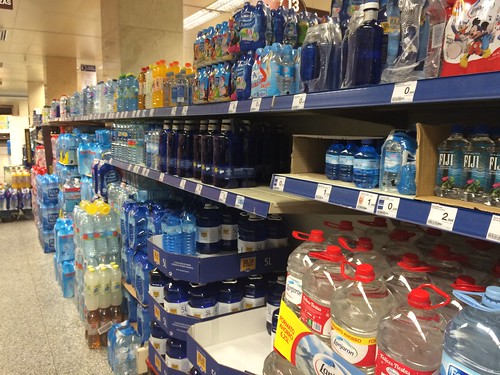I have been following the tragedy of Flint (Michigan, USA) water residents’ struggles with their municipal tap water supply ever since it started. It’s perhaps the only instance of water problems that I know of in recent years that has been taken as relevant and seriously as climate change. As my own research has shown, environmental activism manages to shine light on complex issues more robustly and visibly whenever human health issues are concerned, and in this case, the Flint water crisis has prolonged for over 2.5 years.
I recently read (in the news) that even as water quality levels improve, Flint residents still choose bottled water over tap water. As I mentioned on Twitter, this is the textbook model of how bottled water companies sustain their leadership in public water provision. Like the Mexican case, one I have been researching for a few years now, fear of the tap and distrust in the municipal water utility to supply high quality water are two major factors why people shift from drinking water from the tap to purchasing bottled water.
In a 2009 paper in the journal Society and Natural Resources, Dr. Yael Parag and Dr. Timmons Roberts discussed this fear of the tap, a phenomenon that I myself have observed replicated in the Mexican case. I have conducted extensive fieldwork in many municipalities across the country, one of my students wrote her Masters’ thesis on the stories around bottled water in Mexico, and another of my students did his Masters’ thesis on a non-parametric, snowball sampling survey of reasons why Mexican consumers drink bottled water. All of our data and conclusions point to the same reason: Mexican people don’t trust their municipal water utilities to provide them with safe drinking water.
And as my research has shown (and Dr. Andrew Szasz’ inverse quarantine theory also confirms), when it comes to their own health and the food and drinks they consume, individuals are extraordinarily risk averse. This risk aversion (combined with local water utilities’ weakening and poor infrastructure in some cases) is something that bottling water companies exploit to convince the consumer of the safety of their own product.
Until we have strong municipalities with financially and technically robust water utilities, with the capacity to supply safe water, bottled water companies will continue to win the battle and commodify the human right to water. This is a dangerous scenario, because Mexico went from drinking basically no packaged water to becoming the world’s global per-capita consumer of bottled water in less than 30 years. Is this really the pathway that other countries want to take?



0 Responses
Stay in touch with the conversation, subscribe to the RSS feed for comments on this post.